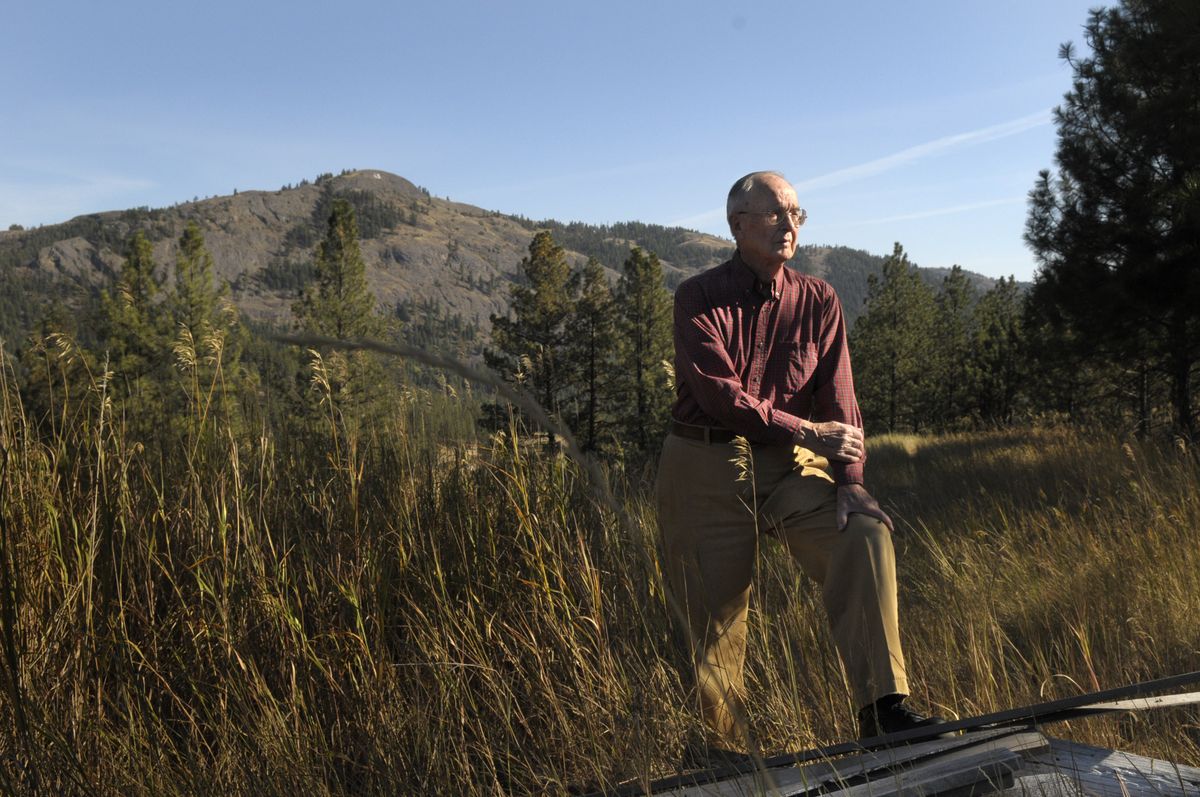Designating wilderness in Washington state
Forest plan review to consider more protected areas

As a medic at an Army hospital in France, Dick Slagle kept a small snapshot close to him.
It was a photo of White Mountain, the southernmost peak in northeast Washington’s Kettle Range. Just before he was drafted, Slagle spent the summer of 1942 on the mountain, working as a fire lookout.
The snapshot became a slice of serenity for Slagle. He’d spent two months in near solitude on White Mountain, watching for tendrils of smoke. But it wasn’t a lonely time. Later, amid the chaos of war, he drew strength from the experience.
“When I felt engulfed by too much Army, I could look at the photograph, and think, ‘My, what nice country that is,’ ” Slagle said. “It had real value.”
Slagle, 89, still values backcountry solitude. The retired pharmacist wants to see parts of the Kettle Range protected as wilderness. This fall, he’ll be among hundreds of people voicing their views, as the Colville National Forest begins to consider whether 240,000 acres of inventoried roadless areas should be recommended for wilderness designations.
“I’ve always cherished the wildness of a forest that hasn’t been too heavily managed,” said Slagle, a native of Republic, Wash. “So many people are not close to nature. They don’t realize how nice it is to be where it’s quiet.”
The Colville National Forest has one wilderness area – the Salmo-Priest Wilderness, which covers about 3 percent of the 1.1 million-acre forest. As part of its forest plan update, the Colville National Forest must evaluate its 21 roadless areas to determine if they have wilderness characteristics. A series of public meetings is planned. Public comments are due Nov. 30.
The recommendation is expected in spring 2010. The meetings this fall are “early steps in the process,” said Margaret Hartzell, plan revision team leader.
If the Colville National Forest deems some or all of the 21 roadless areas appropriate for wilderness, the proposal would be vetted by others up the administrative ladder in the Forest Service and the U.S. Department of Agriculture. Only an act of Congress can create a new wilderness area.
“If you look around at other wilderness proposals, it’s not unusual for it to take years,” Hartzell said.
The Wild Sky Wilderness, which protects 106,000 acres in the Mount Baker-Snoqualmie National Forest, was approved this spring after five years of congressional debate.
According to the 1964 Wilderness Act, wilderness designations are for forests that have kept their “primeval” character. The land must have had little impact from human activity or, as the act describes it, be “untrammeled by man.”
Wilderness proposals typically draw controversy. Traditional users often complain about being “locked out” of federal lands. Logging and mining are prohibited in wilderness areas, along with chain saws, motor vehicles and mountain bikes. Cattle can remain, but ranchers have to leave their trucks behind.
Wilderness backers say the Colville National Forest is large enough for all users.
The proposal has support from the Northeast Washington Forestry Coalition, a broad-based group of timber and environmental interests. The coalition is backing 19 of the Colville’s 21 roadless areas for wilderness designations.
“Our coalition has come to embrace wilderness, just as we’ve come to embrace a timber industry in these communities,” said Mike Petersen, executive director of the Spokane-based Lands Council, which is a coalition member.
That attitude is “a big step, because it’s been so controversial,” said Lloyd McGee, a forester for Vaagen Brothers Lumber Co., and the coalition’s president.
McGee said wilderness became a pivotal issue at the negotiating table. Environmental groups wanted more acreage protected in wilderness, while timber interests wanted a more predictable flow of logs from the Colville National Forest’s road-equipped acreage. Each side agreed to support the other.
Discussions about wilderness must include frank talk about tradeoffs, McGee said, and how users who lose access to certain lands can be accommodated elsewhere.
“If you understand there’s an abundance of land to work with, then you can support each other,” McGee said. “You can use your ATV, or go out and get solitude, or graze cattle, or grow and harvest trees. … We can find appropriate places on the national forest for all these things.”
For some residents, however, wilderness remains a prickly topic. “This map will eat Ferry County alive,” said Mike Blankenship, a county commissioner. One-third of the federal forest within the county could be eligible for wilderness, he said.
The county, with fewer than 10,000 residents, and neighboring Stevens and Pend Oreille counties are some of poorest in the state, Blankenship said. He predicted that new wilderness designations would cut the flow of tourism dollars to the three counties by eliminating recreation opportunities.
“The backcountry horsemen will lose their riding areas, because they won’t be able to bring in chain saws to brush out trails,” he said. “The bicyclists lose out. All you’re left with is a few backpackers.”
While some areas have special attributes that need to be protected, “I think wilderness locks it up too tight,” Blankenship said. “Other users need areas to ride with high vistas, and I don’t want to lock them out.”
Slagle, the former Army medic, hiked up to White Mountain in early July. He followed a 2 ½-mile trail to the 7,000-foot summit, winding through meadows carpeted with Indian paintbrush, lupine and rock cress.
The hike brought back vivid memories of the summer he spent with deer, coyotes and chipmunks for company. He saw three people during those two months: his brother, who came for a visit; a ranger, who occasionally passed through on horseback; and a sheepherder.
“It’s hard to convey the value of wilderness to so many people,” Slagle said. “It’s like trying to put a value on your church, or your family.”